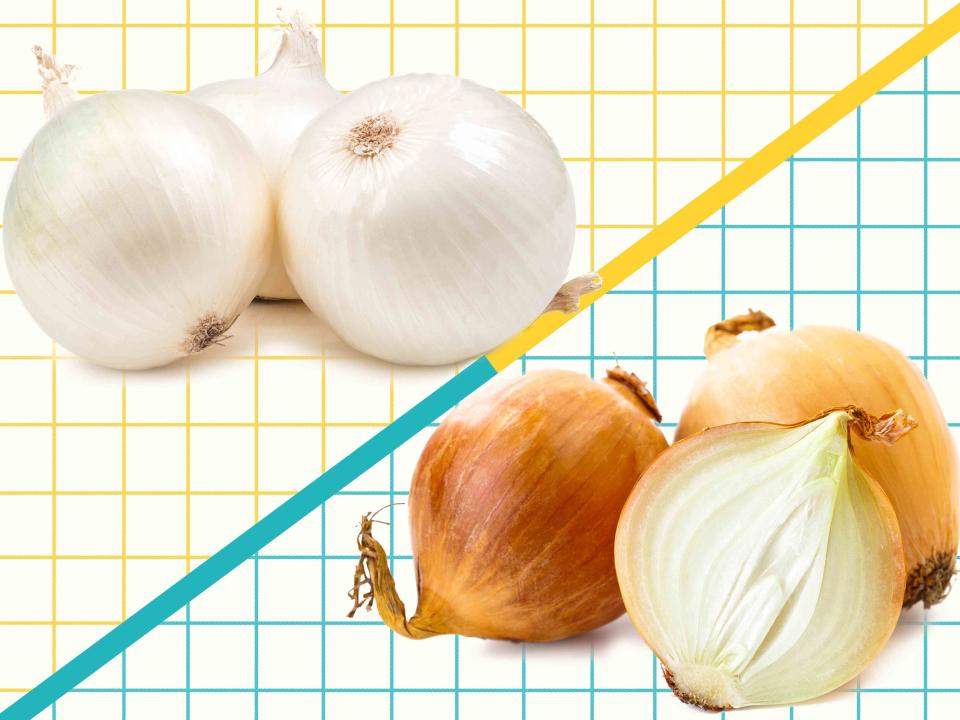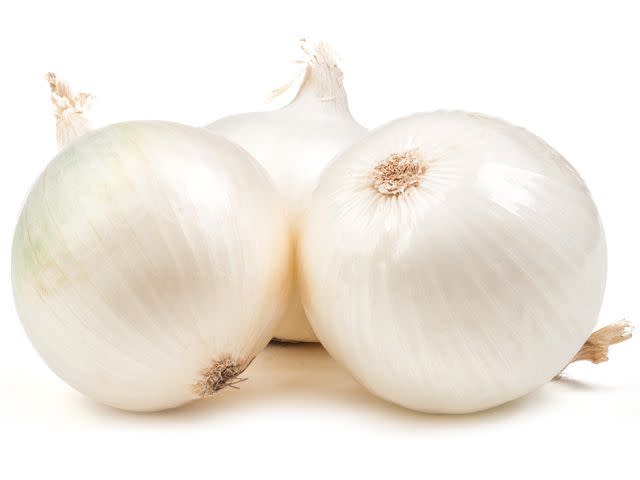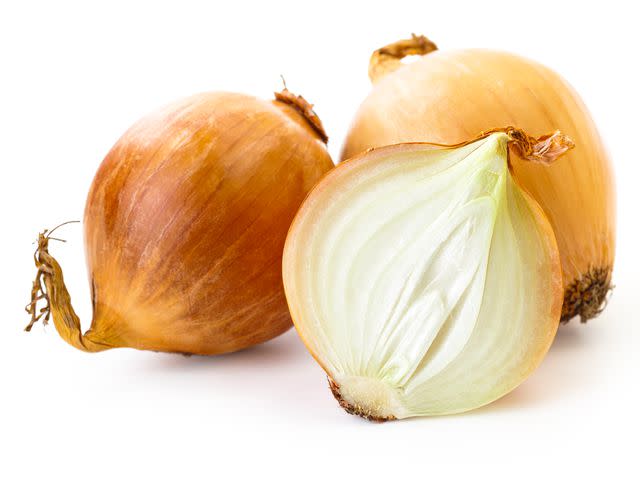The Difference Between Yellow and White Onions Is More Than Skin Deep
Here's what you need to know about subbing one for the other.

Serious Eats / Getty images
The onion is the surest kitchen partner I know. It’s arguably the most hardworking allium and the beginning of nearly every savory dish I can think of. Onions kick off your cooking by igniting your senses with a sting in the eyes as you slice them, then perhaps perfuming the kitchen with a mouthwatering aroma as they quietly sizzle in a pan.
With very little coaxing, onions provide a wide range of flavor—from sharp and spicy when raw to mellow and sweet when cooked. But what if you’re seeking to stay at one end of that spectrum? It’s valuable to know when to use yellow onions over white onions and vice versa, and when it’s perfectly fine to swap the two. I spoke with René Hardwick, director of public and industry relations for the National Onion Association, to learn all about the differences between these two varieties of onions.
What Is the Difference Between Yellow and White Onions?
For one, it’s no popularity contest, because if it were, yellow onions would win in the United States by a landslide. Yellow onions make up 87% of the US onion crop, according to the National Onion Association, while white onions make up approximately 5%. And while yellow onions take up more space in the produce section, you’ll almost always see some white onions nestled alongside them— and the culinary powers of white onions should not be overlooked.
While they look similar, these two types of onions have distinct differences in flavor and texture.
White onions have a sharper, more distinct onion flavor than yellow onions. They tend to have a cleaner, crisper, and firmer texture, with a slightly brighter taste when raw and little to no aftertaste. When cooked, white onions break down more easily than their yellow counterparts—almost melting into long-cooked dishes like soups and stews.

Getty Images / fastudio4
Yellow onions have a more complex flavor profile, with a balance of sweetness and pungency. They have a more tender and slightly denser texture when raw, and the kind of aftertaste that can wake up the dead. When cooked, they soften further and become sweeter and more caramelized, but retain their structural integrity.

Getty Images / mariusFM77
Sweet onions, sold under trademarked names such as Vidalia, Maui, and Walla Walla, are a type of yellow onion that is milder and seasonal. You’ll see them at the store during the spring and summer months. The more generically labeled yellow, white, and red onions available year-round are called storage onions because they’ve been dried out after harvest to keep for months. If you find these varieties at farmers markets, you may see them with specific tags like Red Zeppelins or Australian Browns.

Getty Images / jmsilva
What Are the Best Uses for Yellow vs. White Onions?
Generally speaking, Hardwick says to think of the yellow onion as your all-purpose onion for cooked dishes in which the onions are sautéed or roasted—anything that can benefit from their sweet, caramelized flavor.
“The yellow onion offers a more savory taste that’s equally good in a fried onion blossom or caramelized atop your favorite meats,” says Hardwick. This type of onion really is the best option for many kinds of braises, like kabab halla (Egyptian braised beef with onions), as well as in fried applications like onion rings.
When to use yellow onions:
Fried onions
Caramelized onions
Soups and stocks
Stews
Braises
White onions are preferable for fresh, raw applications and should be your go-to when cooking dishes from Mexican and Southwest cuisines. “The crunch and zing of raw white onions do the trick on top of tacos, chili, and salsas,” says Hardwick. It’s the top choice for making pico de gallo. White onions are also ideal for making white sauces, like soubise, when you want to maintain the colorlessness.
When to use white onions:
Dips
Salsas
Salads
Sandwiches
Tacos
Burgers
Can You Substitute Yellow Onions for White Onions, and Vice Versa?
White and yellow onions are mostly interchangeable, especially when cooked. “The differences just help vary our menus,” says Hardwick.
Using one for the other won’t alter your dish too much. Sometimes a mix of onions produces a welcomed complexity, like in Daniel Gritzer’s French onion soup recipe. And sometimes the best onion is the cheapest one, as in J. Kenji Lopez Alt’s Oklahoma-style onion burgers.
But now that you know the differences, you’ll know what to grab when you’ve got options and are going for a specific taste or texture.
The Takeaway
White onions tend to be milder and crisper with less of an aftertaste, making them great in raw applications, such as in fresh salads, salsas, and sandwiches.
Yellow onions have a bold, sweet flavor, so they’re ideal when you want a more pungent onion flavor and silky texture, such as in soups, braises, and sautéed dishes.
There are differences between yellow and white onions, but don’t fret too much about using the right one; when you’re in need of an onion in a pinch, you can use what you have. It’ll still taste great in the end!
Read the original article on Serious Eats.

